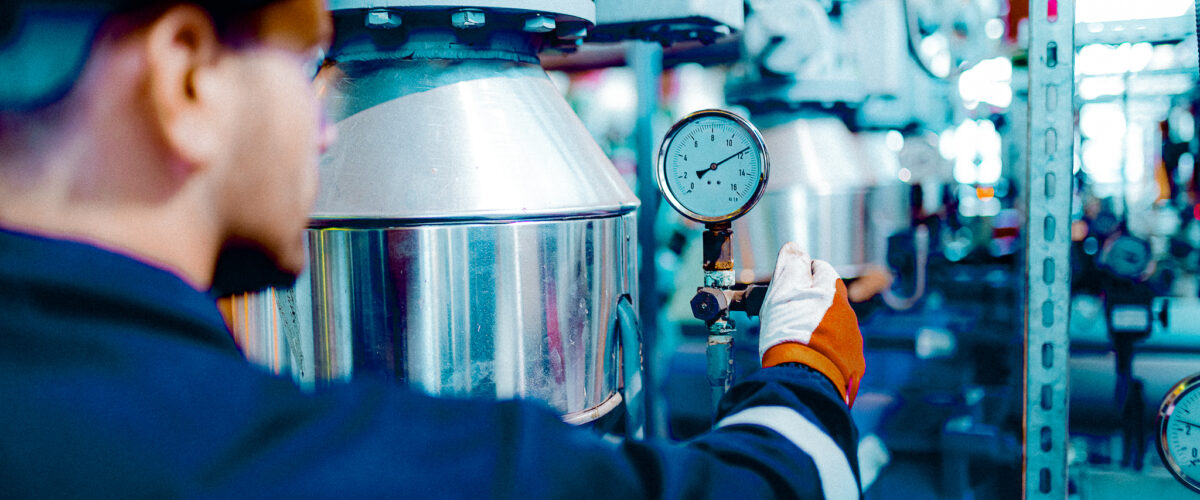What to Consider When Choosing Gas Detection Equipment
Gas detection equipment is a cornerstone of workplace safety. The right detectors protect employees from harmful gases like carbon monoxide, carbon dioxide, and oxygen-depleting leaks. Choosing wisely means balancing compliance, worker safety, and long-term reliability.
A gas detector is more than just a piece of equipment. It’s the difference between catching a hazard early and letting a dangerous situation develop unnoticed. Here are the key factors to consider when deciding which gas detection equipment is right for your facility.
Fixed vs. Portable Systems
Portable gas detectors are designed for areas rarely entered or for field use. They are great for maintenance teams or employees working in confined spaces. Portables can also be used to spot detect spills or confirm abnormal conditions.
Fixed gas monitors, on the other hand, are always in place and operating. They do not rely on an employee remembering to grab a device, being properly trained, or complying with rules. Relying only on portable detectors alone creates risks: employees may get complacent, devices can get lost or damaged, or worse, a leak may go undetected until someone is already exposed. Fixed systems ensure continuous coverage so gases cannot silently build up and spread into occupied spaces.
Gases You Need to Monitor
Most people think of carbon monoxide and carbon dioxide, but oxygen monitoring is often overlooked. Facilities using nitrogen, argon, or helium may develop small leaks that go unnoticed. These leaks can displace oxygen, creating a life-threatening hazard where employees can lose consciousness or even die before anyone realizes there’s a problem.
We see this risk most often in medical and lab settings. Histopathology labs use liquid nitrogen, pharmacies use dry ice, and research labs may use other inert gases. Without proper oxygen detection, these common practices create serious safety blind spots.
Environmental Challenges to Consider
The surrounding building environments have a major impact on sensor performance. High humidity, extreme temperatures, and the presence of contaminating gases like hydrogen sulfide or hydrocarbons can all reduce accuracy.
In harsh environments, ruggedized detectors are not optional. Explosion-proof units are always required where Class 1 Div 1 conditions apply, and we also recommend them in washdown areas or locations where forklifts and heavy equipment may strike or damage sensors. Cutting corners here almost always leads to costly repairs or compliance violations.
Ease of Integration and Maintenance
Gas detection systems need to connect seamlessly with your existing infrastructure. Hawk often sets up standalone panels tied to alarms and ventilation, then feeds signals out to a building automation system via BACnet. This ensures local safety responses work automatically while giving the facility broader monitoring capability.
Maintenance is another critical factor. In our experience, at least 75% of facilities with existing systems show significant lapses when we first come on board. Skipping gas detection system maintenance or delaying sensor replacement leads to false alarms, wasted downtime, and in some cases, complete loss of detection capability. Reliable systems are only as strong as the maintenance behind them.
Costs and Ownership
Annual costs for calibration and sensor replacement vary widely. A small system might spend $2,300 per year, while large facilities can invest $25,000 to $50,000 to keep everything secure and compliant.
Portable and fixed systems serve different needs, but one isn’t necessarily more expensive than the other over time. Portable gas monitors do require more training and oversight to ensure employees actually use them properly. Fixed systems shift that burden to a smaller group of trained staff or to Hawk’s service team, making them easier to manage at scale.
FAQs
What type of gas detector should I buy?
Choose fixed systems for continuous monitoring in high-risk areas, and portable units for mobile work or confined spaces. Most facilities need both.
Do I need multi-gas monitoring?
Yes, if your workplace uses or produces more than one hazardous gas. Multi-gas monitors provide wider protection and are often required by safety standards.
What brands are most reliable?
Hawk works with nearly every major manufacturer and evaluates performance based on real-world results, not just spec sheets. Reliability depends on matching the right equipment to your environment and compliance requirements.
How Hawk Helps You Choose the Right Gas Detection Equipment
Hawk has seen what happens when facilities choose the wrong equipment. One client tried to zip-tie portable detectors to conduit as a substitute for fixed systems. The devices ran out of batteries and drifted out of calibration, leaving the facility with a false sense of security.
Our team evaluates your gases, environment, and compliance requirements to recommend the right balance of fixed and portable monitors. From gas detection equipment selection to calibration and ongoing service, Hawk helps you make informed choices that protect workers and prevent costly mistakes.
Contact Hawk Equipment today to discuss your gas detection equipment needs and secure the right solution for your facility.

